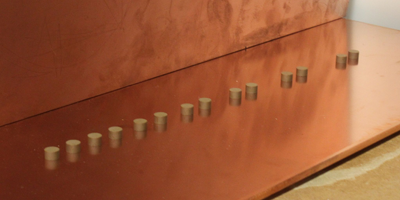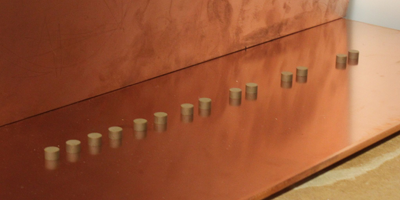Dirac Oscillator with Microwaves
Theories involving the Dirac oscillator, the relativistic version of the harmonic oscillator, show up in fields from nuclear physics to quantum optics, and now a team reporting in Physical Review Letters has used microwaves to produce the first experimental realization of it. In previous theoretical work, three of the authors showed that they could reproduce the properties of a Dirac oscillator using a seemingly unrelated system—a single particle bouncing through a one-dimensional array of pairs of potential wells. The distances between the wells were not periodic but increased monotonically along the array.
In recent experimental work, the team replaced the wells with millimeter-scale dielectric cylinders sandwiched between a pair of metallic plates. With this setup, they demonstrated the energy-level structure for various quantum systems. Now, John Franco-Villafañe, from the National Autonomous University of Mexico Cuernavaca, and colleagues have tackled the Dirac oscillator.
In the presence of microwaves, the cylinders act as resonators, but they leak enough radiation to their nearest neighbors to interact and generate a spectrum of many resonant frequencies for the system. The spectral peaks matched the energy levels expected for a Dirac oscillator, at least for the lower energy levels, and the match was more accurate as more resonators were added.
The authors showed that with adjustments in the positions of the resonators, they could generate a gap in the energy spectrum, corresponding to a massive Dirac oscillator—the system one would expect with a real electron. The gapless spectrum, by contrast, corresponds to the massless version, similar to electrons in graphene. In future work, they hope to model wave functions, pulse propagation, and other Dirac-type systems. – David Ehrenstein





